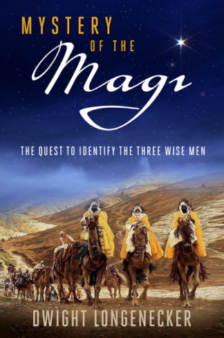Anybody who has taken New Testament 101 will know that the liberal Bible scholars have dissected the gospels like vultures picking over a corpse.
I mustn’t be too harsh. The literary, form and historical critics of the gospels have contributed a lot to our knowledge of the sacred Scriptures. However, they have often worked from materialist assumptions and been overly skeptical about the historical reliability of the gospel accounts.
This has done a huge amount of damage because every Christian minister has to do his or her New Testament studies and most come away feeling that the gospels are a hodge podge of faulty legends, shaky myths and some out and out fabrications. With their trust in the historical reliability of the gospels shaken their trust in the Scripture is shaken and all sorts of other problems tumble on from that–a weakening of conviction about the gospel and its power to change lives, an increasing assumption that the Bible is a flexible and changing. test that always needs to be adapted (and they are the ones to adapt it if need be) and more.
Are the gospels historically accurate? I’ve blogged about it here and here, but in the popular imagination, and among many Christian ministers–Catholic clergy included–the gospels are historical like the legend of Johnny Appleseed is historical. Maybe based in a real person, but widely exaggerated and not really trustworthy.
 This is one of the reasons why I have written The Mystery of the Magi-the Quest to Identify the Three Wise Men. Matthew’s story of the visit of the Magi is the one story par excellence which is considered to be a fanciful, pious fiction. Marcus Borg and John Dominic Crossan write it off as a pretty fable and a New Testament scholar friend said, “Geesh! If you suggest that the magi story might be historical you can kiss your New Testament academic career good bye!” The “orthodoxy” among the Biblical scholars on this one is ironclad. In producing this book I have had a cool response even from conservative Evangelical and Catholic scholars. All this without reading the book!
This is one of the reasons why I have written The Mystery of the Magi-the Quest to Identify the Three Wise Men. Matthew’s story of the visit of the Magi is the one story par excellence which is considered to be a fanciful, pious fiction. Marcus Borg and John Dominic Crossan write it off as a pretty fable and a New Testament scholar friend said, “Geesh! If you suggest that the magi story might be historical you can kiss your New Testament academic career good bye!” The “orthodoxy” among the Biblical scholars on this one is ironclad. In producing this book I have had a cool response even from conservative Evangelical and Catholic scholars. All this without reading the book!
I simply started by asking if the magi could have been historical figures where did they come from? Most writers simply pick up the notion that they were from Persia–modern day Iraq-Iran. But nobody did the research into the magi at the time of Christ or what other possible origins might be realistic.
So I went digging and started with the guess that the Old Testament prophecies in Isaiah 60 might just give the clue. They prophesied visitors coming to a Messiah from Arabia. The Arabian kingdom at the time of Christ’s birth was the Nabatean kingdom with its capital at Petra. I then went on to learn as much as I could about the Nabateans, and what I found was absolutely riveting. It all fits together neatly and the more I learned the more I realized that I had stumbled on something no one else had really put together in the same way, and one of the reasons no one had is because the Bible scholars had waved their hand and looked across their half glasses and said, “Ah yes, the Magi story…a charming tale concocted by the early church to magnify the importance of Jesus the so-called Son of God.”
Anyway…for the next few months leading up to Christmas I’ll be blogging about this topic here at Standing on My Head. I’ll use the same picture and the tag “Mystery of the Magi” so you can follow the posts. If you like the posts and share my enthusiasm for the book you can help really big time by sharing the posts on social media and through your email channels. Go here to the landing page and watch my video about the subject.
The subject of the Adoration of the Magi is one of the most popular in Christian art so in the next weeks I’ll also be posting some cool art on the subject and writing about it.







[…] post will be about this most fascinating historical topic of who they might be. The first post is here in which I discuss the importance of whether there Magi were actually historical figures or not. It […]